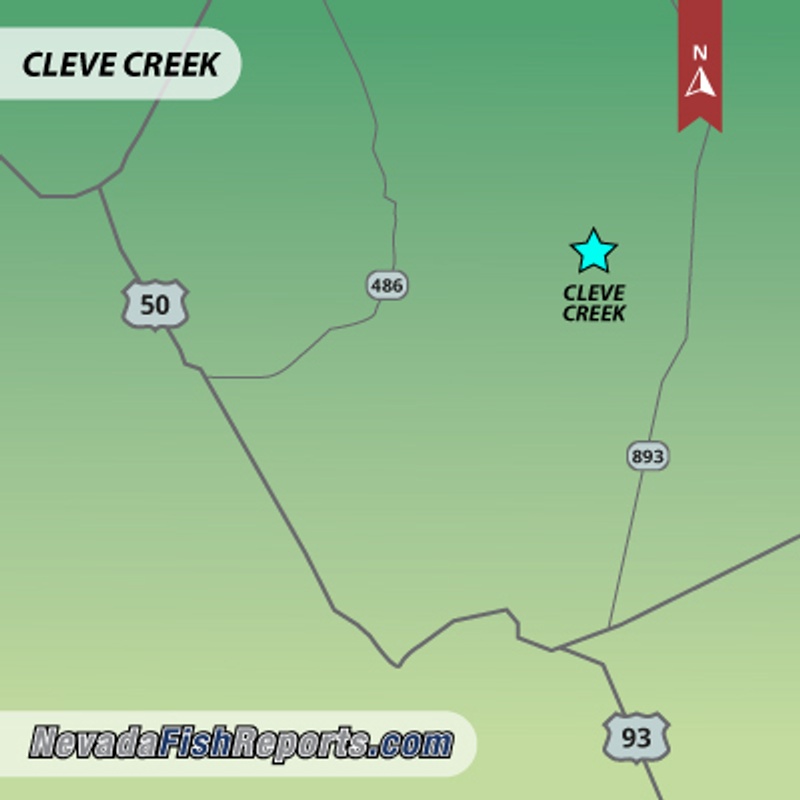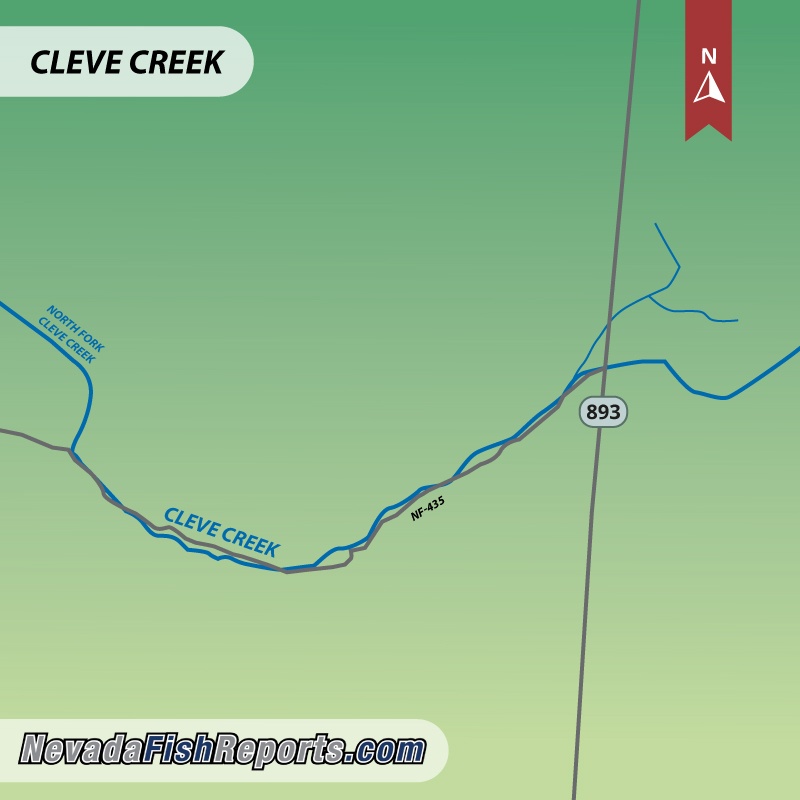Cleve Creek - Ely, NV

Fish Spot Details
| Fish Species: | Rainbow Trout, Brown Trout |
Cleve Creek, situated near Ely, Nevada, within the Humboldt-Toiyabe National Forest, constitutes a pristine high-elevation coldwater stream fishery. This relatively diminutive system primarily sustains populations of wild or naturally reproducing Brown Trout (Salmo trutta) and Rainbow Trout (Oncorhynchus mykiss). Its clear, cold waters and varied microhabitats (riffles, runs, pools) necessitate a highly technical and stealthy angling approach.
Angling methodologies are predominantly light-tackle and precision-oriented. Spin casting with diminutive artificial lures (e.g., 00-0 spinners, micro-spoons) is effective in pocket water and runs, requiring ultralight setups. Fly fishing is the dominant and most productive method. Dry fly presentations during active entomological hatches (e.g., caddis, small mayflies) or terrestrial falls demand precise, drag-free drifts. Nymphing with small, imitative patterns (e.g., Hare's Ear, midge imitations) without a significant indicator, or via high-stick techniques, is consistently effective subsurface. Stealth and downstream approaches are critical for success due to the trout's heightened wariness in clear, shallow waters. Optimal fishing periods extend from late spring through early autumn, contingent upon stable flows and insect emergence. Access is via unpaved forest roads, necessitating preparedness for remote, undeveloped conditions. Anglers are unequivocally mandated to consult current Nevada Department of Wildlife (NDOW) regulations concerning specific bag limits and any area-specific provisions, crucial for the sustained management of this exceptional mountain stream resource.
Angling methodologies are predominantly light-tackle and precision-oriented. Spin casting with diminutive artificial lures (e.g., 00-0 spinners, micro-spoons) is effective in pocket water and runs, requiring ultralight setups. Fly fishing is the dominant and most productive method. Dry fly presentations during active entomological hatches (e.g., caddis, small mayflies) or terrestrial falls demand precise, drag-free drifts. Nymphing with small, imitative patterns (e.g., Hare's Ear, midge imitations) without a significant indicator, or via high-stick techniques, is consistently effective subsurface. Stealth and downstream approaches are critical for success due to the trout's heightened wariness in clear, shallow waters. Optimal fishing periods extend from late spring through early autumn, contingent upon stable flows and insect emergence. Access is via unpaved forest roads, necessitating preparedness for remote, undeveloped conditions. Anglers are unequivocally mandated to consult current Nevada Department of Wildlife (NDOW) regulations concerning specific bag limits and any area-specific provisions, crucial for the sustained management of this exceptional mountain stream resource.
Latest Fish Reports
| Date | Report | Author |
| 12-2-2022 | As of December 2, Cleve Creek was flowing at a low 4.46 cfs Flows are low and there is snow and... more » |
Nevada Department of Wildlife |
| 11-18-2022 | As of November 18, Cleve Creek was flowing at a low 3.54 cfs Flows are low and there is snow and... more » |
Nevada Department of Wildlife |
| 11-4-2022 | As of November 4, Cleve Creek was flowing at a low 3.72 cfs Flows are up a bit but still well... more » |
Nevada Department of Wildlife |
| 10-5-2022 | Cleve Creek has poor flows Cleve Creek has poor flows. Fishing the small... more » |
Nevada Department of Wildlife |
| 9-17-2022 | As of September 16, Cleve Creek was flowing at a low 3.54 Cleve Creek has poor flows. Fishing the small... more » |
Nevada Department of Wildlife |
Detailed Map


Arizona.FishReports.com © 2025. All Rights Reserved.
Website Hosting and Design provided by TECK.net
Website Hosting and Design provided by TECK.net